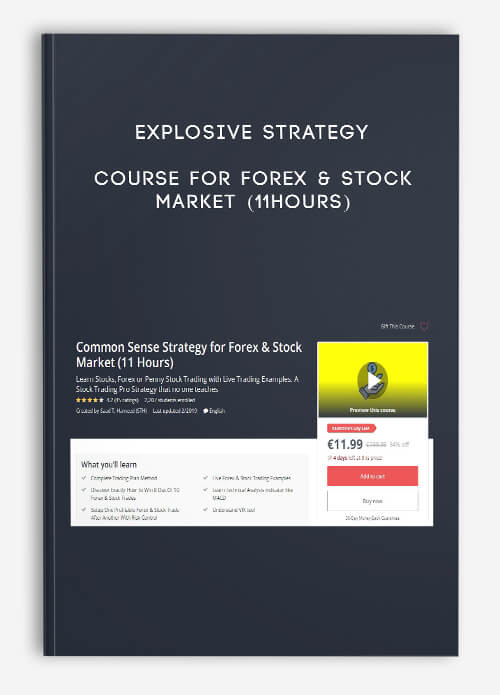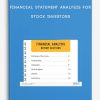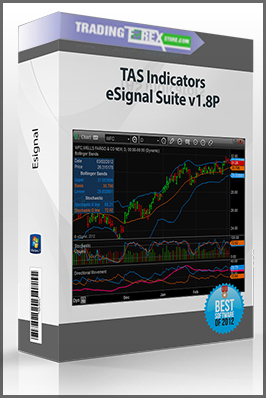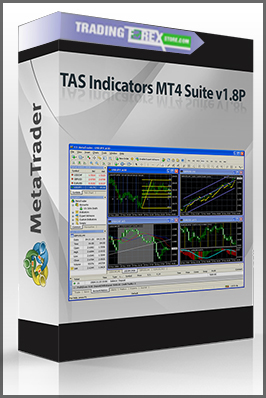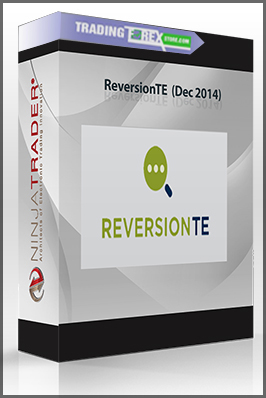Explosive Strategy Course for Forex & Stock Market (11Hours)
$22.00
Product Include:
File size:
- Description
Description
Explosive Strategy Course for Forex & Stock Market (11Hours)
**More information:
Get Explosive Strategy Course for Forex & Stock Market (11Hours) at bestoftrader.com
Description
Mastering Short-Term Trading
Step 1: Watch the Moving Averages
A moving average is the average price of a stock over a specific period of time. The most common time frames are 15, 20, 30, 50, 100 and 200 days. The overall idea is to show whether a stock is trending upward or downward. Generally, a good candidate will have a moving average that is sloping upward. If you are looking for a good stock to short, you generally want to find one with a moving average that is flattening out or declining.
Step 2: Understand Overall Cycles or Patterns
Generally, the markets trade in cycles, which makes it important to watch the calendar at particular times. Since 1950, most of the stock markets gains have occurred in the November to April time frame, while during the May to October period, the averages have been relatively static. Cycles can be used to traders’ advantage to determine good times to enter into long or short positions.
Step 3: Get a Sense of Market Trends
If the trend is negative, you might consider shorting and do very little buying. If the trend is positive, you may want to consider buying with very little shorting. When the overall market trend is against you, the odds of having a successful trade drop.
Following these basic steps will give you an understanding of how and when to spot the right potential trades.
Controlling Risk
Controlling risk is one of the most important aspects of trading successfully. Short-term trading involves risk, so it is essential to minimize risk and maximize return. This requires the use of sell stops or buy stops as protection from market reversals. A sell stop is an order to sell a stock once it reaches a predetermined price. Once this price is reached, it becomes an order to sell at the market price. A buy stop is the opposite. It is used in a short position when the stock rises to a particular price, at which point it becomes a buy order.
Both of these are designed to limit your downside. As a general rule in short-term trading, you want to set your sell stop or buy stop within 10% to 15% of where you bought the stock or initiated the short. The idea is to keep losses manageable so gains will be considerably more than the inevitable losses you incur.
Technical Analysis
There is an old saying on Wall Street: “Never fight the tape.” Whether most admit it or not, the markets are always looking forward and pricing in what is happening. This means that everything we know about earnings, company management and other factors is already priced into the stock. Staying ahead of everyone else requires that you use technical analysis.
Technical analysis is a process of evaluating and studying stocks or markets using previous prices and patterns to predict what will happen in the future. In short-term trading, this is an important tool to help you understand how to make profits while others are unsure. Below, we will uncover some of the various tools and techniques of technical analysis.
Buy and Sell Indicators
Several indicators are used to determine the right time to buy and sell. Two of the more popular ones include the relative strength index (RSI) and the stochastic oscillator. The RSI compares the relative strength or weakness of a stock compared to other stocks in the market. Generally, a reading of 70 indicates a topping pattern, while a reading below 30 shows that the stock has been oversold. However, it is important to keep in mind that prices can remain at overbought or oversold levels for a considerable period of time.
The stochastic oscillator is used to decide whether a stock is expensive or cheap based on the stock’s closing price range over a period of time. A reading of 80 signals the stock is overbought (expensive), while a reading of 20 signals the stock is oversold (inexpensive).
RSI and stochastics can be used as stock-picking tools, but you must use them in conjunction with other tools to spot the best opportunities.
Patterns
Another tool that can help you find good short-term trading opportunities are patterns in stock charts. Patterns can develop over several days, months or years. While no two patterns are the same, they can be used to predict price movements.
Several important patterns to watch for include:
- Head and shoulders: The head and shoulders, considered one of the most reliable patterns, is a reversal pattern often seen when a stock is topping out.
- Triangles: A triangle is formed when the range between a stock’s highs and lows narrows. This pattern often occurs when prices are bottoming or topping out. As prices narrow, this signifies the stock could break out to the upside or downside in a violent fashion.
- Double tops: A double top occurs when prices rise to a certain point on heavy volume, retreat and then retest that point on decreased volume. This pattern signals the stock may be headed lower.
- Double bottoms: A double bottom is the reverse of a double top. Prices will fall to a certain point on heavy volume and then rise before falling back to the original level on lower volume. Unable to break the low point, this pattern signals the stock may be headed higher.
Bottom Line
Short-term trading uses many methods and tools to make money. The catch is that you need to (For additional reading, check out: >How to Start Trading.)educate yourself on how to apply the tools to achieve success. As you learn more about short-term trading, you’ll find yourself drawn to one strategy or another before settling on the right mix for your particular tendencies and risk appetite. The goal of any trading strategy is keeping losses at a minimum and profits at a maximum, and this is no different for short-term trading.
Sponsored
Compete Risk Free with $100,000 in Virtual Cash
Put your trading skills to the test with our FREE Stock Simulator. Compete with thousands of Investopedia traders and trade your way to the top! Submit trades in a virtual environment before you start risking your own money. Practice trading strategies so that when you’re ready to enter the real market, you’ve had the practice you need.
Forex Trading – Foreign Exchange Course
Want to learn about Forex?
Foreign exchange, or forex, is the conversion of one country’s currency into another.
In a free economy, a country’s currency is valued according to the laws of supply and demand.
In other words, a currency’s value can be pegged to another country’s currency, such as the U.S. dollar, or even to a basket of currencies.
A country’s currency value may also be set by the country’s government.
However, most countries float their currencies freely against those of other countries, which keeps them in constant fluctuation.

